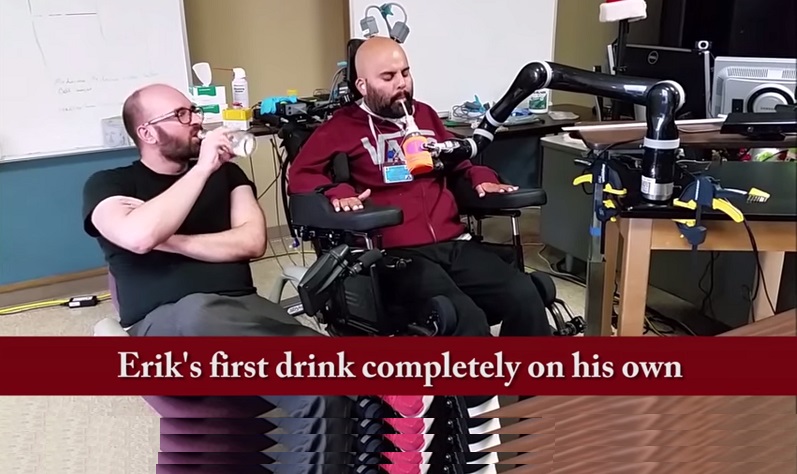Scientists have taken a new approach to neural implants that control robotic arms for people with physical disabilities: instead of connecting them to the area of the brain that controls muscle movement, scientists have hooked implants up to the area that controls intention, according to a new study published by the US National Library of Medicine.
The result, according to an article that appeared on The Conversation, is suprisingly natural movement of robotic arms when before, movement directed by the brain’s primary motor cortex was delayed and shaky.
This has allowed test subject Erik Sorto, who was paralysed from the neck down by a violent incident 13 years ago, to drink a bottle of beer smoothly and naturally using a robotic arm driven by his intentions.
This development was made possible by the study’s measurement of neurons, or brain cells, in the brain’s posterior parietal cortex which scientists believe to be responsible for what they term “action intentions”.
Those neurons apparently contain more information than neurons in areas of the brain that determine motor control, resulting in more detailed information that neural implants and robotic prosthetics can use to accurately interpret a patient’s intentions.
Using this breakthrough, scientists have enabled Sorto to even play a game of rock, paper, scissors, which as you know requires nimble finger movements.
So while we’re not yet at the level of Steve Austin-esque feats of cybernetic amazeballness, research in the field is at least quite promising. Read more over at The Conversation.
[Source & Image – The Conversation]

